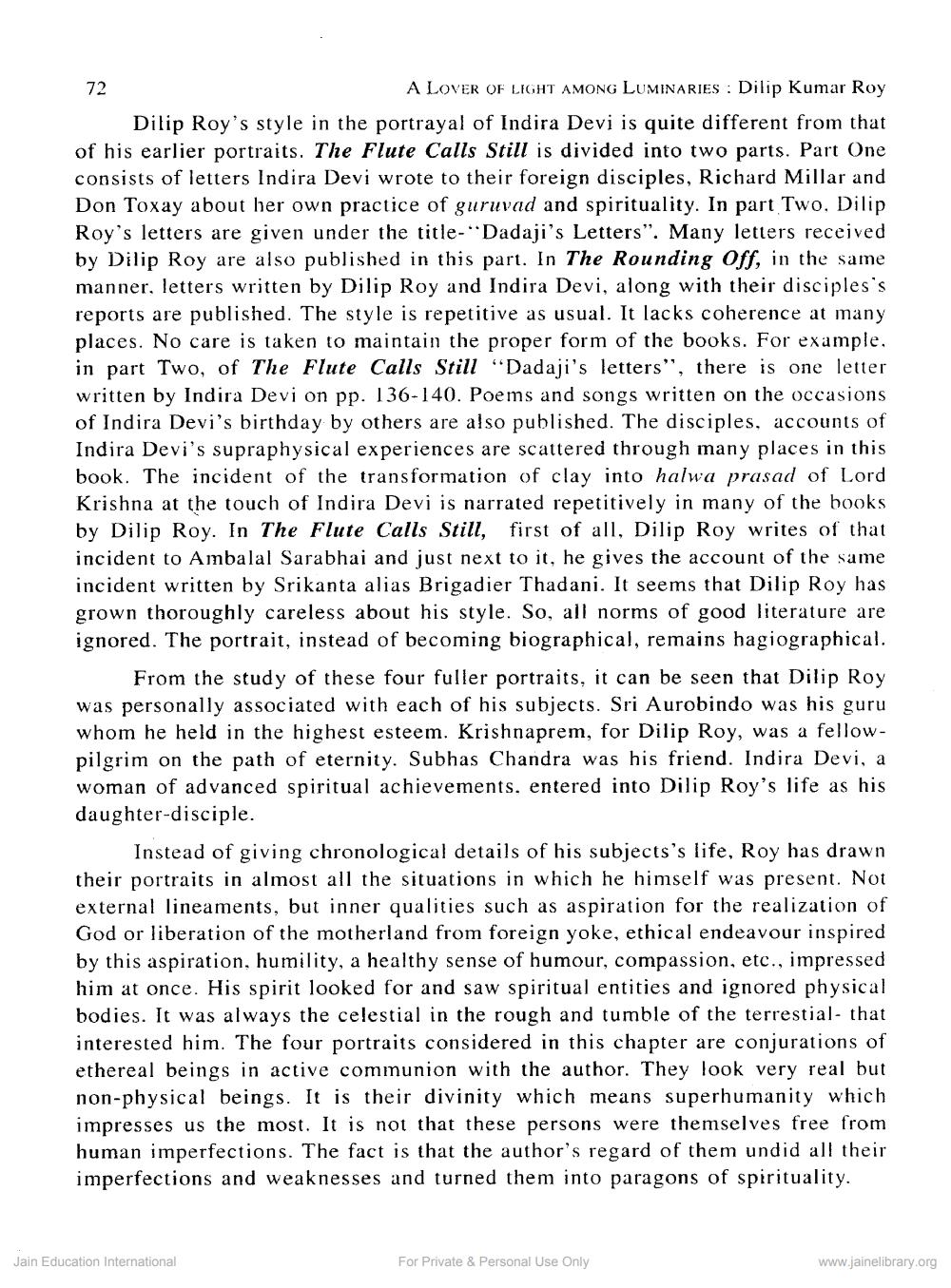________________
72
A LOVER OF LIGHT AMONG LUMINARIES: Dilip Kumar Roy Dilip Roy's style in the portrayal of Indira Devi is quite different from that of his earlier portraits. The Flute Calls Still is divided into two parts. Part One consists of letters Indira Devi wrote to their foreign disciples, Richard Millar and Don Toxay about her own practice of guruvad and spirituality. In part Two. Dilip Roy's letters are given under the title-"Dadaji's Letters". Many letters received by Dilip Roy are also published in this part. In The Rounding Off, in the same manner. letters written by Dilip Roy and Indira Devi, along with their disciples's reports are published. The style is repetitive as usual. It lacks coherence at many places. No care is taken to maintain the proper form of the books. For example. in part Two, of The Flute Calls Still "Dadaji's letters", there is one letter written by Indira Devi on pp. 136-140. Poems and songs written on the occasions. of Indira Devi's birthday by others are also published. The disciples, accounts of Indira Devi's supraphysical experiences are scattered through many places in this book. The incident of the transformation of clay into halwa prasad of Lord Krishna at the touch of Indira Devi is narrated repetitively in many of the books. by Dilip Roy. In The Flute Calls Still, first of all, Dilip Roy writes of that incident to Ambalal Sarabhai and just next to it, he gives the account of the same incident written by Srikanta alias Brigadier Thadani. It seems that Dilip Roy has grown thoroughly careless about his style. So, all norms of good literature are ignored. The portrait, instead of becoming biographical, remains hagiographical.
From the study of these four fuller portraits, it can be seen that Dilip Roy was personally associated with each of his subjects. Sri Aurobindo was his guru whom he held in the highest esteem. Krishnaprem, for Dilip Roy, was a fellowpilgrim on the path of eternity. Subhas Chandra was his friend. Indira Devi, a woman of advanced spiritual achievements. entered into Dilip Roy's life as his daughter-disciple.
Instead of giving chronological details of his subjects's life, Roy has drawn their portraits in almost all the situations in which he himself was present. Not external lineaments, but inner qualities such as aspiration for the realization of God or liberation of the motherland from foreign yoke, ethical endeavour inspired by this aspiration. humility, a healthy sense of humour, compassion, etc., impressed him at once. His spirit looked for and saw spiritual entities and ignored physical bodies. It was always the celestial in the rough and tumble of the terrestial- that interested him. The four portraits considered in this chapter are conjurations of ethereal beings in active communion with the author. They look very real but. non-physical beings. It is their divinity which means superhumanity which impresses us the most. It is not that these persons were themselves free from. human imperfections. The fact is that the author's regard of them undid all their imperfections and weaknesses and turned them into paragons of spirituality.
Jain Education International
For Private & Personal Use Only
www.jainelibrary.org




